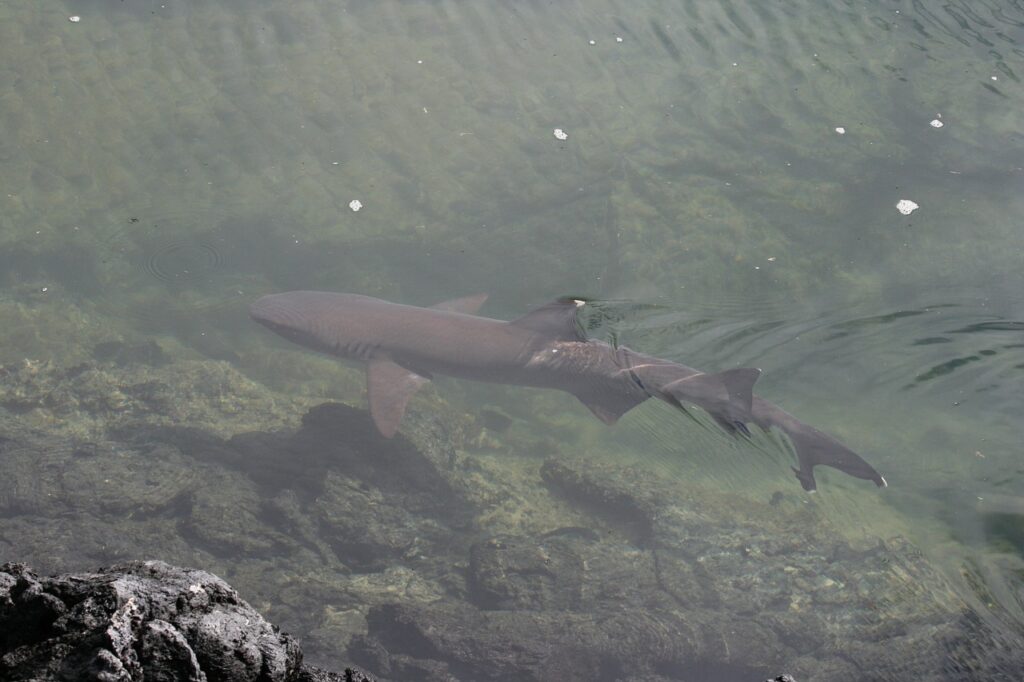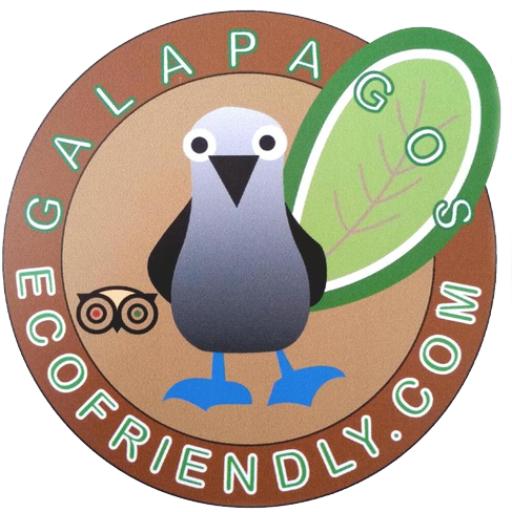Introduction to Galapagos
Land-Based Excursion around San Cristobal Island
Boating and Snorkeling Excursion
Ecotourism allows a place such as Galapagos, a pristine and untainted ecologically sound environment, to keep its fundamental nature and, at the same time, to grow and benefit from tourism.
Tourism requires balancing three interests:
first, the plants, ocean life, animals, biome and biosphere that rely on environmental balance and consistency to thrive and to evolve;
second, the local population so that it can be economically supported;
third: the tourists who stimulate the economy and deserve to have a marvelous, rich and fulfilling time on their journeys.
The concept of responsible tourism supports maintaining strict standards and guidelines that retain the balance of nature on the land and in the sea while still allowing the local population to flourish and advance economically and socially and the tourists to be introduced to and become enriched by unique environments.
Ecotourists leave only a positive footprint. In Galapagos, hotel-based tourism has become the model and method of choice for eco-travelers to enjoy nature and all the wonders and marvels of the archipelago.
Galapagos Eco Friendly promotes and advocates ethical ecotourism, meaning we encourage visitation to our fragile and undisturbed natural areas in a manner that allows minimal environmental impact. We want to contribute to the education and experience of our guests, introduce them to our land and culture and enhance their overall visit to Galapagos. We want out guests to feel that their lives have been enriched and to have a renewed commitment to the environment. Galapagos Eco Friendly is a destination that in all manners supports sustainability and preservation of our environment and on our entire planet.
Our philosophical foundation unites conservation, communities, and sustainable travel. We minimize environmental impact, build ecological and cultural awareness and respect, provide positive experiences for our visitors and raise sensitivity to the political, environmental, and social climate of the Galapagos Islands and Ecuador.
We are a unique operation in that we are family-owned and operated. The hotel is located within the secure and secluded grounds that include our own home. While ecotravel is for many a new and trending idea, for us it is not. As Galapaguaños, we have been committed to sustainable travel and environmental awareness all of our lives. Galapagos Eco Friendly is a logical extension of our personal and deeply ingrained concern for the environment; we hope to pass this devotion on to Galapagos visitors and future generations. We share all of our experience, amenities, knowledge and passion for Galapagos with our guests.
We are certified as an ecotourism destination by the Ecuadorian Ministry of Tourism and hold Platinum Level Green Credentials on TripAdvisor because of our environmental commitments.
Recently, the Galapagos National Park and Ecuadorian Ministry of Tourism have actively changed the standard tourism model in Galapagos from cruise-based to hotel-based. For many years, no new cruise boat permits have been issued, thereby limiting the number of boats and the number of guests given access to our sensitive protected visitor sites. Instead, so that growth can continue while the environment remains protected, new hotel permits have been issued. Now, tourists can come to Galapagos and see the archipelago from a whole new land-based perspective.
In this newer model, Galapagos guests stay at the hotels on the islands and travel each day to destinations of their choice, working with hotel owners and travel agencies who plan these day trips based on the stated desires of the guests themselves.
One of the most intriguing aspects of this new model is its impact on the local Galapagos economy. While nearly all of the cruise ships are owned by outsiders from other countries or the mainland of Ecuador, nearly all of the hotels are owned by Galapagueños. This allows visitors who stay in boutique hotels such as Galapagos Eco Friendly to have a profound positive impact on the local economy, fulfilling one of the linchpins of responsible tourism as advocated by The International Ecotourism Society.
The area in and around Puerto Baquerizo and San Cristobal is filled with countless opportunities for nature lovers to see some of the most unique, intriguing and spectacular wonders of the world.
Hikers, divers, snorkelers and photographers will find that favorite destinations within the Galapagos National Park and Galapagos Marine Reserve, such as Kicker Rock and Isla Lobos, are located on San Cristobal Island and in its environs.
Galapagos Eco Friendly is convenient to these and many more amazing adventures.


 From the Interpretation Center you will have the opportunity to hike and to explore the two-mile lava trail to Frigatebird Hill and Darwin Bay, where you will see the breeding area of both the Magnificent Frigatebird and Great Frigatebird. The local plant, animal and bird life provides you with many exciting photographic opportunities. You are likely to see a unique dry forest of cacti, acacia and sometimes Galapagos cotton. At Frigatebird Hill and Darwin Bay you will be treated to sweeping views of the port, and the north-western part of San Cristobal, including Kicker Rock.
From the Interpretation Center you will have the opportunity to hike and to explore the two-mile lava trail to Frigatebird Hill and Darwin Bay, where you will see the breeding area of both the Magnificent Frigatebird and Great Frigatebird. The local plant, animal and bird life provides you with many exciting photographic opportunities. You are likely to see a unique dry forest of cacti, acacia and sometimes Galapagos cotton. At Frigatebird Hill and Darwin Bay you will be treated to sweeping views of the port, and the north-western part of San Cristobal, including Kicker Rock.




 During your stay in Puerto Baquerizo Moreno plan on visiting the very popular Interpretation Center, just about a 10-minute walk from the harbor. The Interpretation Center provides important background information and introductory perspective for any traveler to the Galapagos Islands. The exhibitions visually explore the archipelago’s natural volcanic history and formation, explain why certain wildlife has been able to sustain itself on a sometimes barren landscape with very little fresh water, and provide insight into the impact of humans and the importance of conservation on the delicate ecosystem of the Galapagos Islands.
During your stay in Puerto Baquerizo Moreno plan on visiting the very popular Interpretation Center, just about a 10-minute walk from the harbor. The Interpretation Center provides important background information and introductory perspective for any traveler to the Galapagos Islands. The exhibitions visually explore the archipelago’s natural volcanic history and formation, explain why certain wildlife has been able to sustain itself on a sometimes barren landscape with very little fresh water, and provide insight into the impact of humans and the importance of conservation on the delicate ecosystem of the Galapagos Islands.

While all of the Galapagos Islands is dedicated to conservancy and maintaining the tenuous ecological balance discovered by Charles Darwin, nowhere is this more true than the Island of San Cristóbal itself. It a forerunner in the quest for renewable energy, as at least 60 percent of its energy already is generated by wind and solar power. Moreover, in conjunction with the Charles Darwin Research Center, it is determined to see that the once-dwindling population of indigenous Galapagos tortoises thrives again. To that end, San Cristóbal boasts a remarkable and impressive controlled breeding center for the endemic Galapagos Giant Tortoise population. Observe these gentle reminders of the past and hope for the future wander through their environment searching for shade and leafy greens, as you photograph and preserve your own precious memories. Those adventurous visitors who hike to Galapaguera will experience the giant tortoises in the preserve mirroring their natural habitat. Not only the Giant Tortoises, but also other endemic species can be seen on this hike, including lava lizards, geckos and mockingbirds.




Let us help you plan your days in the beautiful Galapagos Islands. Arrangements will be overseen by the hotel’s owner, Harry Jimenez, an experienced naturalist guide certified by the Galapagos Islands National Park Service, scuba dive master and third-generation San Cristobal native. He will imbue your days with his own passion for and knowledge of the Galapagos land and marine reserves.
Some ideas for excursions that you might enjoy are the following:
Design your own adventure
At Galapagos Eco Friendly our objective is to make your holiday an unforgettable one. Tell us your passions and let us tailor the perfect itinerary for you.
Remember, our owner Harry Jimenez is not only a Galapagos native, but a guide on some of the most prestigious yachts sailing Galapagos. His knowledge of the islands is legendary. Let him share his knowledge with you and help you have the journey of a lifetime.
Introduction to Galapagos
Land-Based Excursion around San Cristobal Island
Boating and Snorkeling Excursion
Days of fun
Boating, Snorkeling and Hiking Excursion
Snorkeling and Scuba Exursion
Experience Galapagos
Boating, snorkeling and hiking expedition
Snorkeling, scuba and hiking expedition
The full galapagos experience
Exploration adventure including San Cristobal and Santa Cruz Islands
Follow us on our social networks and find out about news and promotions in Galapagos with Hotel La Isla.
Address: Av. 12 de febrero y Av. J Roldo, San Cristobal island, Ecuador | Phone: 593 99 393 5090 | Email:galapagosbluefantasy@gmail.com or info@galapagosecofriendly.com
Developed by: Innova tu Hotel
Copyright 2022© Hotel Galápagos Eco Friendly
Click one of our contacts below to chat on WhatsApp
If you have questions or queries about our hotel you can write to us via WhatsApp, we will attend to you immediately
